So, if I’m guessing correctly, you’re here because you’ve decided to learn how to make an eBook. Am I right? Thought so.
Pretty smart move on your part—for deciding to publish an eBook, that is. You see, eBooks are an incredibly popular and essential part of content marketing strategies. In today’s fast-paced digital world, eBooks have become more than just digital books—they’re powerful tools for content marketing, lead generation, and establishing authority in any niche. Whether you’re an entrepreneur, a marketer, or a business owner, an eBook can help you connect with your audience on a deeper level, share valuable insights, and even drive sales.
But here’s the thing—creating an eBook isn’t just about writing content and saving it as a PDF. It’s about crafting a compelling, engaging, and well-structured resource that solves problems, answers questions, and provides real value to your readers.
What This Guide Will Help You Achieve
If you’ve ever wondered:“
- How do I even start with eBook creation?”
- “What’s the best way to structure and design an eBook?”
- “How can I use an eBook to generate leads or grow my brand?”
You’re in the right place. This guide will walk you through 15 expert tips and best practices that cover everything from planning your content to designing, optimizing for SEO, and promoting your eBook effectively.
By the end of this blog, you’ll have a clear, actionable roadmap to create an engaging eBook that not only attracts readers but also supports your business goals.
1. Define Your eBook’s Purpose and Target Audience
Importance of Knowing Your Audience
Before you start typing your first sentence, ask yourself:
- Who am I writing this eBook for?
- What problem am I solving for them?
Understanding your target audience is the foundation of a successful eBook. Whether you’re targeting small business owners, digital marketers, or stay-at-home parents, you need to tailor your content to their interests, challenges, and goals.
Pro Tip:
Use tools like surveys, polls, or social media Q&A sessions to gather insights about what your audience really wants. This is the key to creating content that resonates.

Aligning eBook Goals with Business Objectives
Your eBook isn’t just a collection of pages—it’s a strategic marketing tool. Define the goal:
- Are you trying to generate leads?
- Build brand authority?
- Educate your audience to drive product or service adoption?
For example:
– If you’re offering a digital marketing course, your eBook could be titled “The Beginner’s Guide to Social Media Marketing”, positioning you as an expert while subtly leading readers to your paid course.
– If you’re in real estate, an eBook like “10 Secrets to Buying Your First Home Without Stress” can help capture leads for property consultations.
2. Craft a Compelling eBook Content Strategy
Research-Driven Content Creation
Great eBooks aren’t written—they’re researched.
Don’t rely solely on what you think your audience wants. Dive into:
– Google Trends to see what’s trending in your niche.
– Keyword research tools to identify high-traffic search terms like “how to make an eBook,” “content creation for eBooks,” and “eBook marketing.”
– Check out Quora, Reddit, and LinkedIn discussions to find real questions people are asking.
This ensures that your eBook is not just informative but relevant and in-demand.
Structuring Your eBook for Maximum Engagement
Nobody wants to read a wall of text. A well-structured eBook should have:
- – A captivating introduction to hook the reader.
- – Clear chapters or sections, each focusing on a specific topic.
- – Bullet points, numbered lists, and subheadings to improve readability.
- – Actionable takeaways at the end of each chapter to reinforce learning.
Think of your eBook as a journey—guide your readers smoothly from one point to the next.

3. Plan Your eBook’s Structure Before You Write
Outlining Chapters and Sections
Before you write a single word, create an outline. This helps you organize your thoughts and ensures your eBook flows logically. Here’s a simple framework:
- Title Page
- Table of Contents (for easy navigation)
- Introduction (why the reader should care)
- Main Content (divided into chapters or sections)
- Case Studies/Examples (real-life applications)
- Conclusion (recap key points)
- Call-to-Action (CTA) (what’s next for the reader?)
Bonus Tip:
When outlining, think about SEO for eBooks. Use relevant keywords naturally in your headings and subheadings to boost search visibility.
The Power of a Clear Flow and Logical Sequence
Readers appreciate clarity. Each section should logically lead to the next, creating a seamless experience. For example:
- Problem → Solution → Action Steps
- Concept → Example → Practical Tips
This not only keeps your readers engaged but also helps them retain the information better.

4. Write with Clarity and Consistency
Finding the Right Tone for Your Brand
Your eBook’s tone should reflect your brand’s personality. Are you aiming for:
- – Professional and authoritative? Perfect for B2B audiences.
- – Casual and conversational? Great for lifestyle brands.
- – Inspiring and motivational? Ideal for personal development topics.
Whatever tone you choose, stay consistent throughout the eBook. This helps build trust and makes your content feel cohesive.
Best Practices for Writing an Engaging eBook
- – Start strong: Your introduction should grab attention. Maybe start with a surprising fact, a question, or a relatable story.
- – Be concise: Avoid fluff. Every sentence should add value.
- – Use simple language: Don’t try to impress with jargon unless necessary.
- – Engage the reader: Use phrases like “you’ll learn,” “imagine this,” or “here’s the secret.”
- – Edit ruthlessly: After writing, take a break, then come back with fresh eyes. Better yet, have someone else review it.
Expert Insight:
According to top content creators, eBooks with short paragraphs, clear subheadings, and actionable tips tend to perform better because they’re easy to read and digest.

5. Make Your eBook Interactive
How to Create Interactive eBooks for Lead Generation
One of the best ways to engage readers and maximize the value of your eBook is by making it interactive. Interactive eBooks encourage readers to actively participate in the content, which increases engagement and fosters stronger connections with your brand. Beyond engagement, interactive elements can also play a crucial role in lead generation.
Benefits of Interactive eBooks
- – Improved Engagement: Interactive features like clickable links, forms, and quizzes help to keep readers immersed in the content, making it more enjoyable and informative.
- – Better Lead Capture: By offering interactive features, you can collect useful data from your readers (such as email addresses, survey responses, or feedback), which can be used to nurture leads and grow your business.
- – Increased Brand Authority: A well-designed interactive eBook can establish your brand as an industry leader by offering valuable resources that go beyond the basics.
Incorporating Clickable Links for Lead Generation
One of the easiest ways to make your eBook interactive is by adding clickable links throughout your content. These links can serve various purposes, such as guiding readers to related blog posts, product pages, or even providing calls-to-action (CTAs) to download additional resources.
- Lead Magnet Links: Use clickable links to direct readers to a lead magnet (like a free checklist or webinar registration) in exchange for their email addresses. This allows you to build your email list for future marketing campaigns.
- Call-to-Action (CTA): Use clear, action-oriented language in your links, such as “Get Your Free Consultation Now” or “Download More Resources.” This makes the reader feel compelled to click and take action.
- Cross-Promote Content: Include links to other pieces of content (e.g., blog posts, case studies, or articles) that deepen the reader’s understanding and interest in your products or services.
Adding Videos to Boost Engagement
Videos are a powerful tool for engagement in any content format, and eBooks are no exception. By embedding videos in your eBook, you can provide a more dynamic and immersive experience for readers. Videos help explain complex concepts in a digestible format and can showcase products or services in action.
How to Add Videos
- Tutorials: Include instructional videos to walk readers through a specific process. This could be a tutorial on using a product or service, demonstrating how to implement the tips in your eBook, or showcasing a customer success story.
- Personalized Content: Create videos where you directly address your audience, explaining key insights or offering personal advice. This builds a deeper connection with your readers and positions you as an authority in your field.
- Product Demos: If your eBook is related to a specific product or service, embed a demo video showcasing its features and benefits. This encourages readers to learn more and can drive sales.
Adding videos also has SEO benefits for eBooks. When you incorporate videos, especially those hosted on platforms like YouTube, you can improve the discoverability of your eBook in search engines, making it easier for potential readers to find.
![16 Fascinating eBook Templates [Free Download] - Convertful ebook covers](https://shoppital.com/wp-content/uploads/2024/01/101-covers-1024x358.webp)
6. Design Your eBook for Maximum Visual Appeal
The Role of Visual Design in eBooks
An eBook isn’t just about words—it’s about the visual experience too. A well-designed eBook is more likely to capture attention and keep readers engaged. Here’s why visual elements are critical:
- First impressions matter: A professional design builds credibility and trust.
- Increases readability: Well-chosen fonts, colors, and layout make your eBook easier to navigate.
- Supports your content: Visuals, such as images, graphs, and charts, can reinforce key points, making them more memorable.
Key Design Elements to Focus On
Here are some design tips to enhance your eBook’s visual appeal:
- – Cover Design: The cover is the first thing readers will see, so make it stand out. Ensure it reflects your brand identity and the eBook’s content.
- If you’re unsure about how to design an eBook cover, tools like Canva or Adobe Spark can help you create professional designs, even on a budget.
- – Typography: Choose easy-to-read fonts and limit the number of font styles to avoid clutter. Consider pairing a clean serif font for body text with a bold sans-serif for headings.
- – Images & Graphics: Integrate high-quality images or infographics to break up long sections of text and provide visual cues to reinforce your message.
- – Interactive Elements: If you’re creating an interactive eBook, include clickable links, embedded videos, or surveys to engage your readers actively.
Mobile-Friendly eBooks
With a significant number of eBook readers accessing content on smartphones and tablets, mobile optimization is crucial. Make sure your design is responsive and looks good on any device. Mobile-friendly design ensures that text is readable, images display correctly, and interactive features function smoothly.
7. Optimize Your eBook for SEO
Why SEO for eBooks Matters
Just like with web pages, SEO plays a huge role in ensuring your eBook gets found by the right audience. When you optimize your eBook, it increases its visibility on search engines, attracting organic traffic from readers searching for related topics.
Key SEO Strategies for eBooks
- Keyword Research: Use high-value keywords like “eBook creation,” “eBook marketing,” and “how to create an eBook” throughout your content. Place them strategically in the title, headings, and body text.
- PDF SEO: If you’re publishing your eBook in PDF format, ensure your file name is descriptive and includes relevant keywords. For example: “how-to-create-an-ebook-guide.pdf” will be more SEO-friendly than “ebook123.pdf.”
- Meta Descriptions: If your eBook is hosted online, use SEO-friendly meta descriptions and alt tags for images.
- Internal Links: When promoting your eBook on your website or blog, use internal links that connect to other relevant content. This boosts SEO and encourages readers to explore more of your content.
Expert Tip: For maximum SEO impact, include a call-to-action (CTA) that drives traffic to your website or landing page, where visitors can download or purchase the eBook.

8. Publish Your eBook on Various Platforms
Choosing the Right eBook Distribution Channels
Once your eBook is complete, it’s time to think about distribution. Where will you publish your eBook so that it reaches the widest possible audience? Here are some popular options:
- • Amazon Kindle Direct Publishing (KDP): One of the most widely used platforms for publishing eBooks, offering tools for both ebook formatting and eBook promotion.
- • Apple Books: A great platform for reaching Apple device users with your eBook.
- • Smashwords: A distribution service that helps publish and promote eBooks across multiple platforms like Barnes & Noble, Kobo, and more.
- • Your Website: Hosting your eBook on your own website allows you to collect leads and market directly to your audience.
Benefits of Multi-Platform Distribution
Don’t limit yourself to just one platform. By distributing your eBook on multiple platforms, you can:
- – Reach a wider audience
- – Generate more leads
- – Create cross-promotion opportunities for your brand.
Tip: Make sure your eBook is formatted according to each platform’s requirements to avoid compatibility issues.
9. Promote Your eBook Effectively
How to Promote Your eBook Online
Creating an eBook is only half the battle. You’ll need an eBook marketing strategy to ensure your target audience finds it. Here are a few effective ways to promote your eBook:
- Social Media Ads: Platforms like Facebook and Instagram offer highly targeted advertising that can help you reach the right audience. Tailor your ad copy to your target audience’s pain points and include a clear CTA to download the eBook.
- Email Marketing: If you already have an email list, send out an announcement about your eBook, including a brief summary of its value. Offer a free chapter or limited-time discount to incentivize readers to download it.
- Influencer Marketing: Partner with influencers in your niche to promote your eBook to a broader audience. Influencers can help generate buzz and increase credibility.
- Content Marketing: Publish blog posts that complement your eBook content. You can offer teasers or key takeaways from the eBook to entice readers to download it for the full version.
Lead Generation with eBooks
eBooks are a powerful lead generation tool. To maximize lead capture, offer the eBook in exchange for an email address. This enables you to build your list for future promotions or email campaigns.

10. Track Your eBook’s Performance
Measuring Success: Key Metrics
After publishing and promoting your eBook, it’s important to monitor its performance. Tracking metrics will help you assess what’s working and what needs improvement. Key metrics to track include:
- Download numbers: How many people are downloading your eBook?
- Website traffic: Is the eBook driving traffic to your website or landing pages?
- Lead generation: How many new leads are you capturing through eBook downloads?
- Engagement: Are readers interacting with your eBook? Are they leaving feedback, sharing it on social media, or clicking on links within the eBook?
How to Use Analytics to Improve Your Strategy
Once you’ve gathered data, use it to refine your strategy. If your eBook is underperforming, consider tweaking your promotion methods or improving the design and SEO strategies.
11. Use Interactive Elements to Enhance Engagement
Why Interactivity Matters in eBooks
Interactive elements in an eBook are a great way to boost engagement and make the reading experience more enjoyable. By incorporating interactive features, you can keep readers interested, improve comprehension, and even collect valuable feedback.
How to Create Interactive eBooks for Lead Generation
Creating interactive eBooks can be a powerful tool for lead generation. Here are some ways to make your eBook interactive:
- – Clickable Links: Include clickable links within the eBook that lead readers to relevant resources, landing pages, or calls-to-action (CTAs). This can direct them toward your products or services.
- – Embedded Forms or Surveys: Use embedded surveys or forms to collect feedback, signups, or even offer readers a free consultation.
- – Interactive Checklists: Including checklists or action steps encourages readers to take immediate action and interact with the content, leading to higher engagement.
By making your eBook interactive, you turn a passive reading experience into an active one, improving both reader retention and lead capture.

12. Format Your eBook for Readability
eBook Formatting Tips for a Smooth Reading Experience
The formatting of your eBook plays a major role in how easily readers can navigate through the content. Here’s how to ensure a smooth reading experience for your audience:
- • Consistent Layouts: Use a consistent layout throughout the eBook. This includes margins, spacing, and font sizes. A clean, uniform design helps readers focus on the content.
- • Headings and Subheadings: Break the text into sections using clear headings and subheadings. This improves readability and allows the reader to easily find the information they are looking for.
- • Table of Contents: For longer eBooks, include a Table of Contents with clickable links to allow readers to jump directly to different sections.
- • Spacing: Don’t clutter your eBook with too much text. Use white space liberally to give the eyes a break and prevent your content from feeling overwhelming.
PDF vs. ePub Formatting
When formatting your eBook, choose between PDF or ePub depending on the platform where you plan to distribute it.
- – PDF eBooks maintain their design layout, so if you have a highly visual design, it’s the best choice.
- – ePub is more flexible for resizing and adjusting on different devices, but it can lose some of the design elements.
Ensure your eBook is properly formatted to ensure a positive reading experience for your audience.
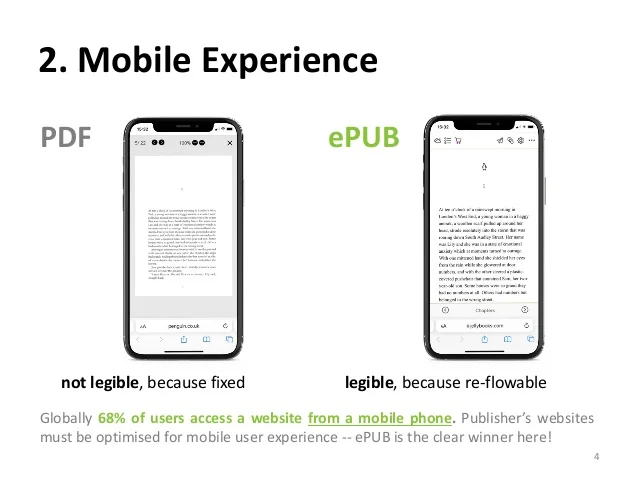
13. Build a Content Strategy Around Your eBook
How to Create an eBook Content Strategy
Creating an eBook is just the beginning. To maximize its impact, you need a well-thought-out content strategy. Here’s how to do it:
- Identify Your Target Audience: Define who will benefit from your eBook. Is it aspiring entrepreneurs, marketers, or a specific industry group? Knowing your audience helps you create more tailored and relevant content.
- Map Your eBook to Business Goals: Align your eBook content with your business objectives. Whether it’s to boost brand awareness, generate leads, or drive sales, ensure your eBook supports your bigger strategy.
- Content Distribution: Develop a plan for how you’ll distribute the eBook. Will you offer it on your website, promote it through ads, or use email marketing? Consider using multiple channels for wider reach.
Create an eBook Launch Plan
An eBook content strategy is incomplete without a launch plan. Plan out your promotional campaigns leading up to the release and after. This might include sneak peeks, early bird offers, or a special launch event to stir interest.
14. Implement Lead Magnets for eBook Promotion
How to Use eBooks as Lead Magnets
An eBook is an excellent lead magnet, attracting potential customers by offering value in exchange for contact information. Here’s how to use eBooks as lead magnets to grow your email list:
- Offer Free Downloads in Exchange for Email Signups: Create a landing page where visitors can download your eBook by entering their email address. This helps you build a targeted email list for future promotions or content.
- Use eBook Offers in Webinars: Combine eBook downloads with webinars or online workshops. Offering your eBook at the end of a webinar can entice attendees to sign up and engage with your brand.
- Exclusive eBook Access: Provide an exclusive eBook to your existing audience or loyal customers as a reward for their commitment.
The video explains a lot…
Use eBooks in a Sales Funnel
eBooks can be used strategically in your sales funnel. At the top of the funnel, you can use the eBook to attract prospects. As they move further down the funnel, you can offer additional resources, services, or products related to the eBook content.
15. eBook Promotion Strategies That Work: How to Promote an eBook Online Effectively
Once you’ve created your eBook, the next step is to get it into the hands of your target audience. Promoting your eBook effectively can significantly boost its visibility and increase downloads. Here’s how you can use a variety of channels to promote your eBook online:
1. Leverage social media for eBook Marketing
Social media platforms are a powerful tool for eBook promotion. Here’s how to make the most of them:
- Share Snippets: Post engaging snippets or quotes from your eBook to pique interest. Include a link to the full download page.
- Create Visual Content: Share eye-catching visuals like eBook covers, infographics, or mini-videos to showcase what the eBook offers.
- Use Hashtags: Utilize popular hashtags related to your eBook’s topic to increase discoverability. For example, use #eBookMarketing, #LeadGeneration, or #ContentCreation.
- Collaborate with Influencers: Partner with influencers or thought leaders in your niche who can share your eBook with their audience.
2. Email Marketing for eBook Promotion
Email marketing is one of the most effective ways to reach your audience directly. Here’s how to leverage it:
- Email List Segmentation: Segment your email list based on interest or demographics and send personalized eBook offers to specific groups.
- Create an Attractive Email Subject Line: Craft a compelling subject line that grabs attention, like “Unlock Exclusive Insights – Download Our Free eBook Now.”
- Incorporate a Strong CTA: Use a clear, strong call-to-action (CTA) in your email, encouraging subscribers to click and download your eBook.
3. Paid Ads for eBook Marketing
Paid ads can be a quick way to drive more visibility for your eBook. Consider these options:
- Facebook and Instagram Ads: Create visually appealing ads that link directly to your eBook landing page. Use targeted ads to reach the right audience based on their interests and demographics.
- Google Ads: Use Google Ads to target specific search keywords related to your eBook topic. This can help your eBook appear to people actively searching for content in your niche.
- Retargeting Ads: Implement retargeting campaigns for people who visited your eBook landing page but didn’t download it. Remind them with personalized ads.
4. Leverage Guest Blogging and Partnerships
Guest blogging or collaborating with industry websites can expand your reach:
- Guest Posts: Write guest blogs on popular websites related to your eBook topic and include a link to your eBook as a resource.
- Partnerships: Partner with relevant businesses or influencers to cross-promote your eBook to a wider audience.

Bonus Tip: Keep Improving Your eBook
Don’t consider your eBook finished once it’s published. Over time, gather feedback from readers and analyze your eBook’s performance. You can always update and improve the content, format, or promotion strategies to stay relevant and continue driving results.
Creating your first eBook doesn’t have to be overwhelming. By following these 15 tips and best practices, you’ll be well on your way to producing a high-quality, engaging eBook that resonates with your audience. Remember, eBook creation is just the first step—effective eBook promotion and SEO strategies are equally important for maximizing visibility and impact.
Whether you’re exploring how to create interactive eBooks, optimizing for mobile-friendly eBooks, or learning how to promote an eBook online, the key is to stay focused on your audience’s needs. With the right approach, your eBook can become a cornerstone of your content marketing strategy, driving leads, engagement, and brand authority.
So, what are you waiting for? Start planning your eBook today and take the first step toward becoming a thought leader in your industry. Happy writing!

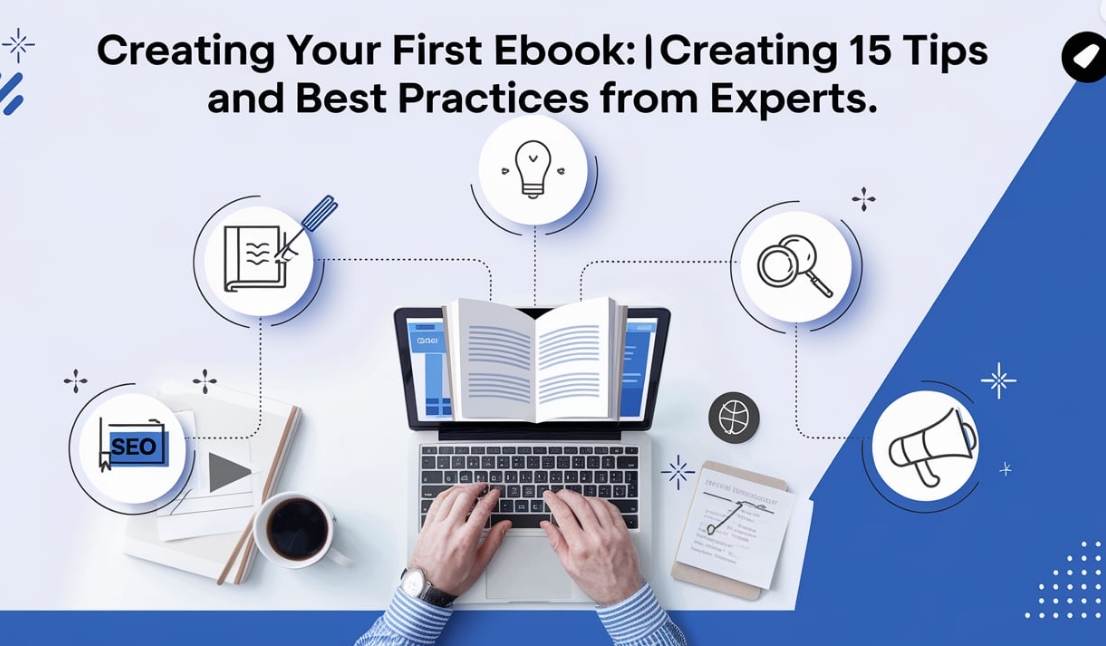
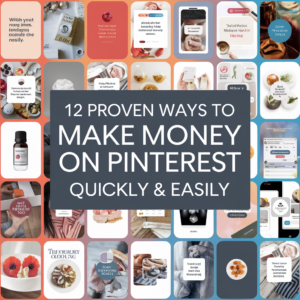


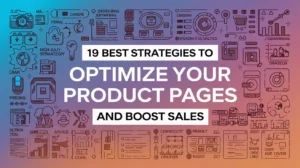





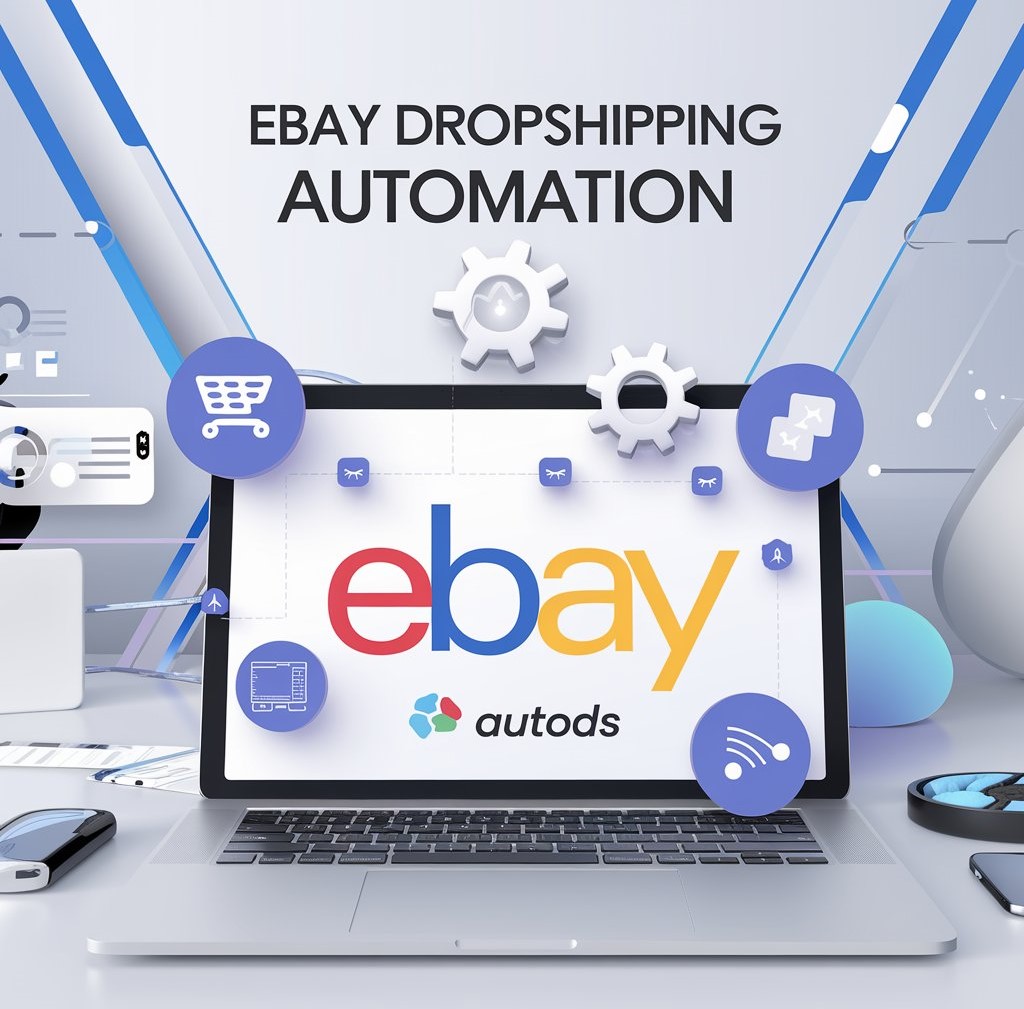
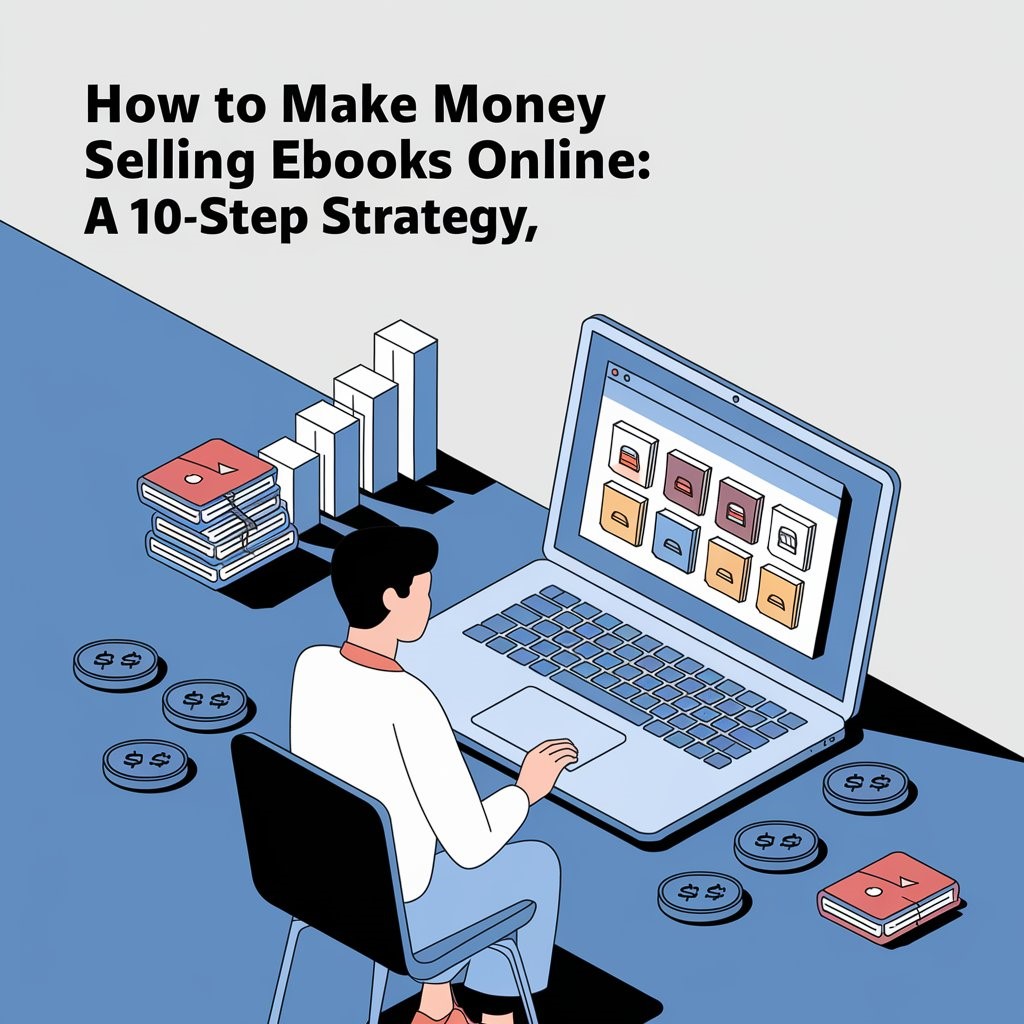
3 thoughts on “Creating Your First eBook: 15 Tips and Best Practices from Experts”